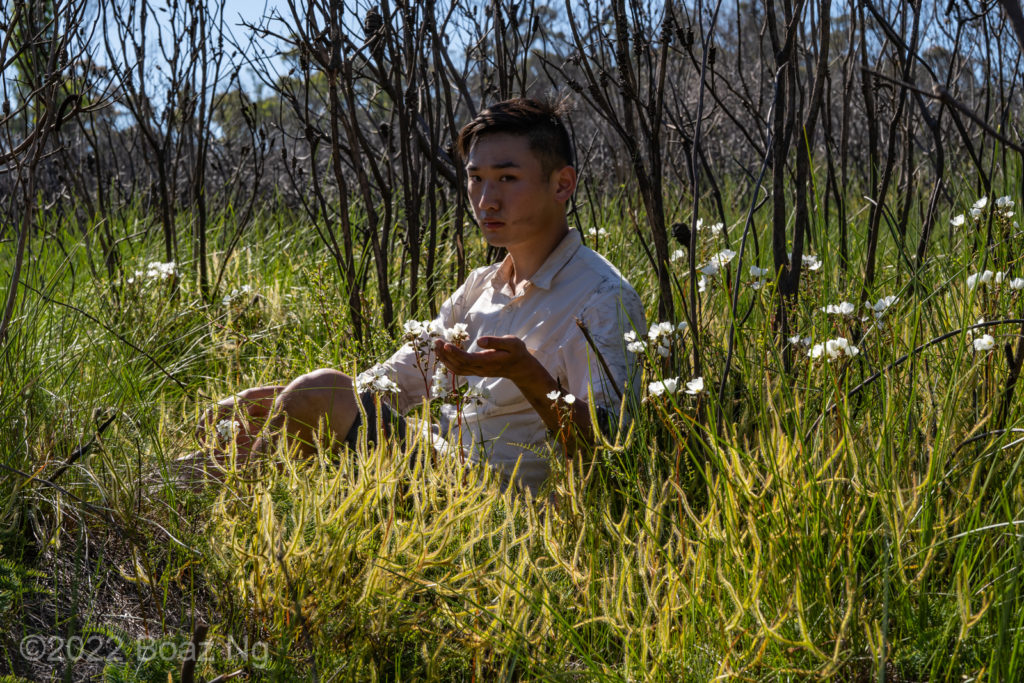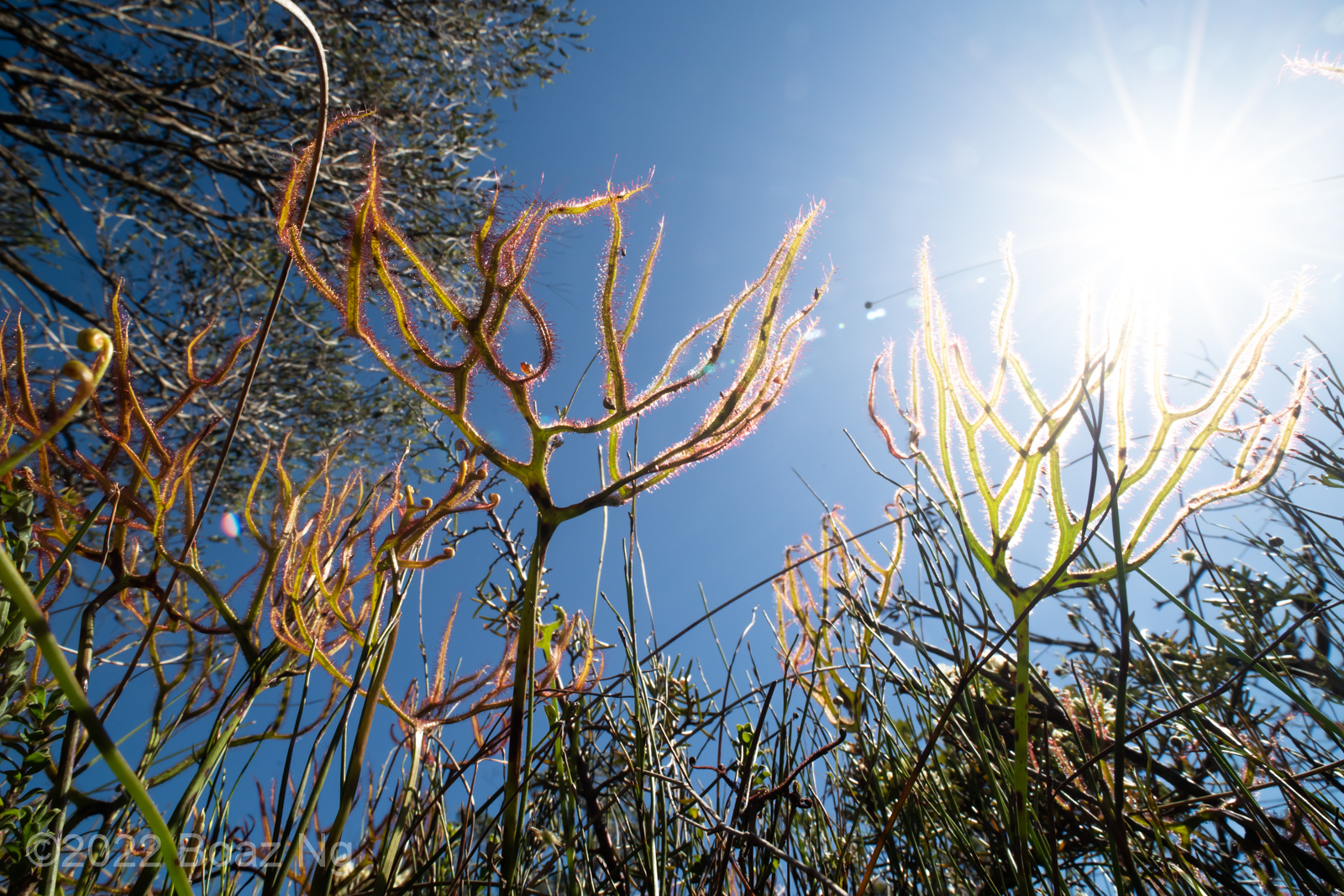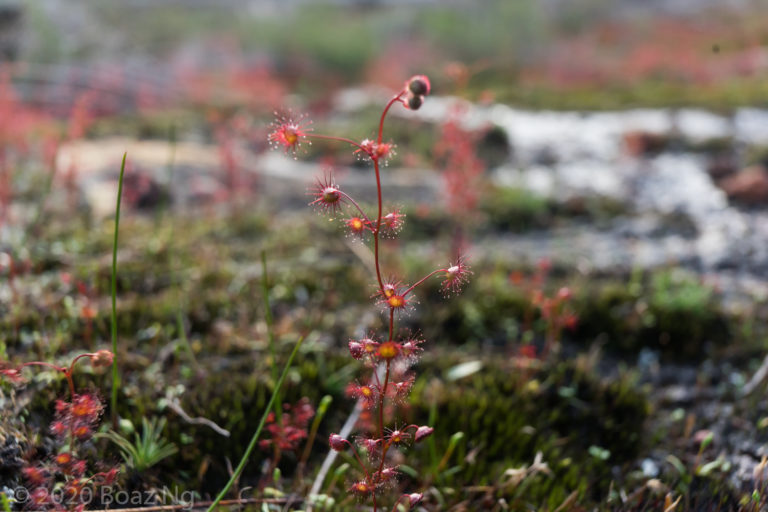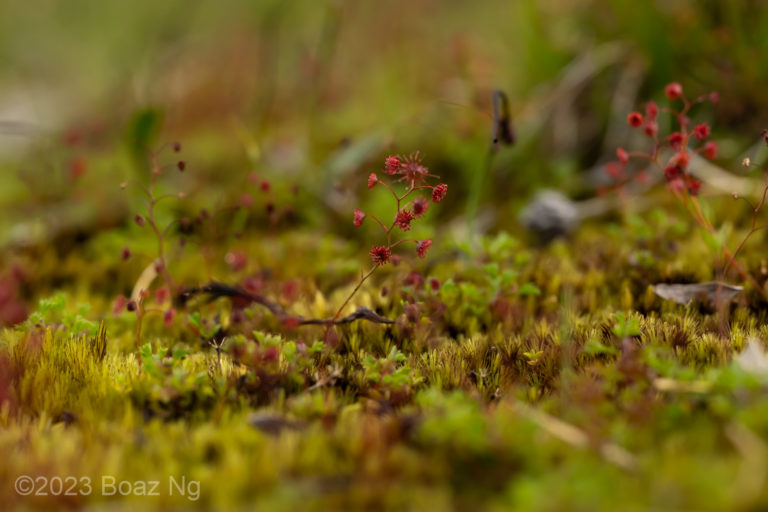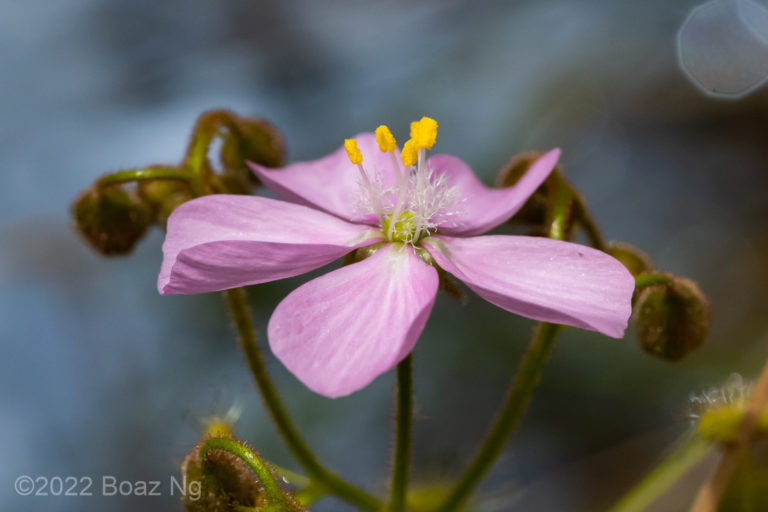The Southern Highlands is a region south of Sydney notable for its sandstone plateaus. Heathlands are common at the top of these plateaus, forming atop the shallow sandy soils that have been stripped of their nutrients by rain over millennia. This habitat is a stronghold of Drosera binata. In December 2021, I spent a few days in the Southern Highlands and was amazed by the sheer amount, variation and size of the plants I saw there.
The first site I visited was a conservation area that had escaped the devastating east coast fires two years prior. As I set off for my hike not long after sunrise, I immediately came across amazing glowing patches of red D. binata in the mowed sides of the fire management trail. The plants looked like flames against the dark morning shadows, and I was able to capture my favourite backlit shots of the species. D. binata is quick to colonise disturbed habitats, taking advantage of the sudden influx of sunlight to grow and flower. So this mowed strip was actually the perfect niche to find the species.
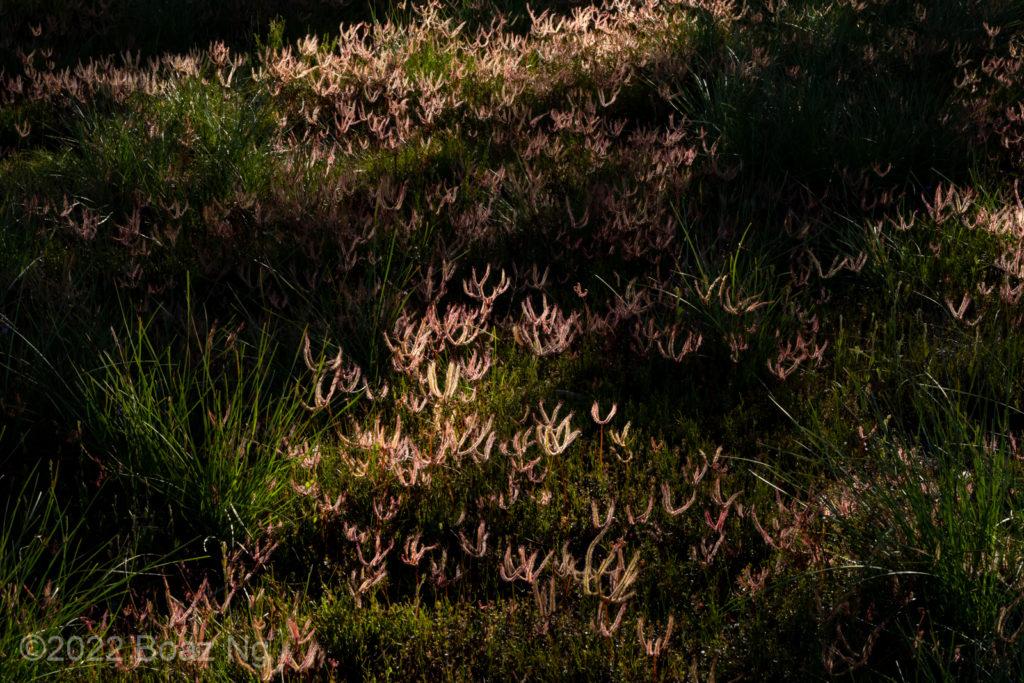
Initially, I thought that I had merely gotten lucky in finding that patch of plants. But as I peered into the shrubby heathland I soon began to realise that the plants were absolutely everywhere… In the bushes, giant stems of Drosera binata reaching in access of 1 meter tall scrambled on top of the vegetation so send their leaves into the light. These fine specimens of D. binata var. multifida were gigantic, exceeding the span of my hand and branching multiple times to form staghorn like laminae.
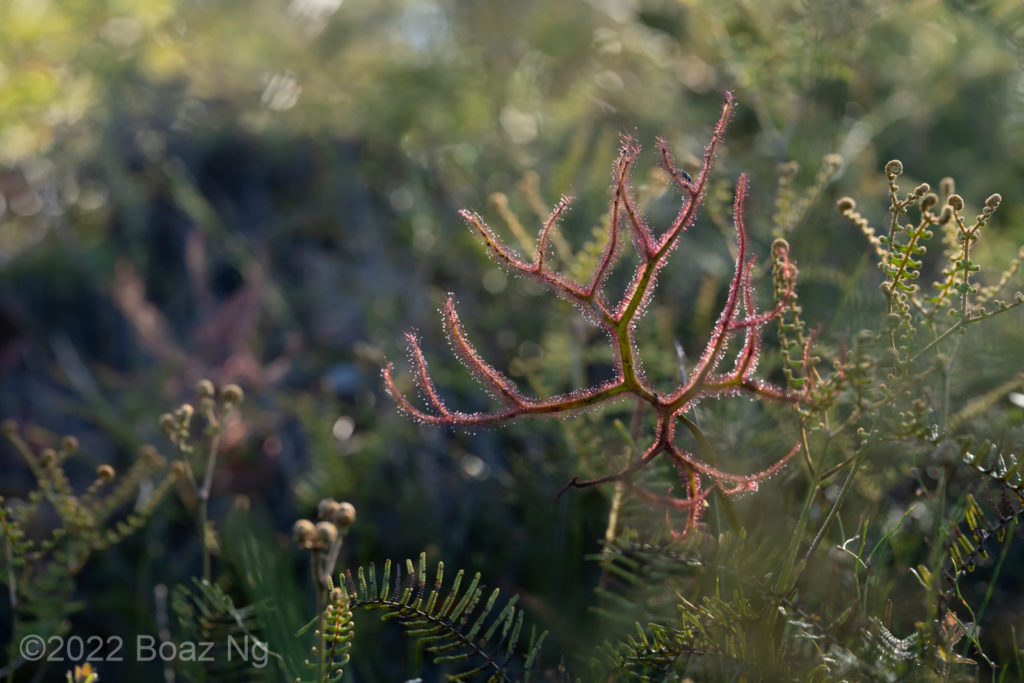
As I walked deeper into the bush, larger and larger specimens began appearing around me. In the corner of my eye I saw a flash of green that alerted me to the presence of Drosera binata var. dichotoma. This form is typically large, with golden-green foliage and is dominant in the elevated sandstone habitats of the Great Dividing Range flanking the coast near Sydney. What was not typical in these specimens was the number of branches in the laminae since the form usually only bifurcates once or twice. I suspect that the plants I found represent hybrids between the multifida and dichotoma forms, which could explain the gigantic size and intermediate features.
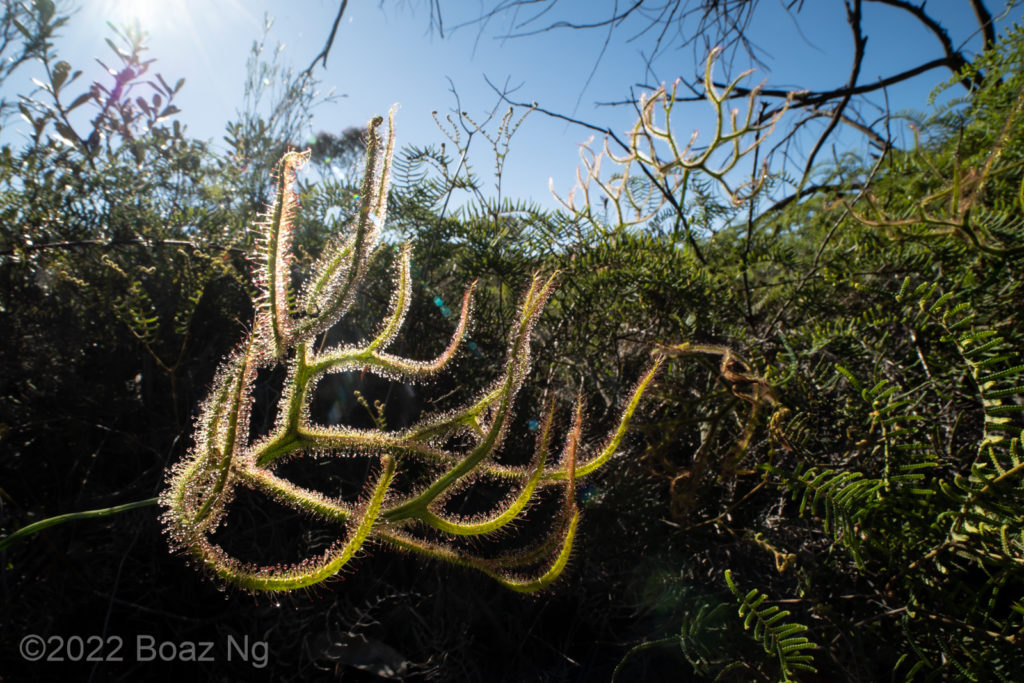
It was also interesting to observe Setocoris bugs on the sundews. These insect predators roam on the sticky leaves of the sundews in search of trapped prey, somehow avoiding getting stuck themselves. The bugs have a close association with Drosera binata and are more or less always found wherever the sundews grow. Whether the bugs move onto other hosts when the sundews enter winter dormancy is a mystery.
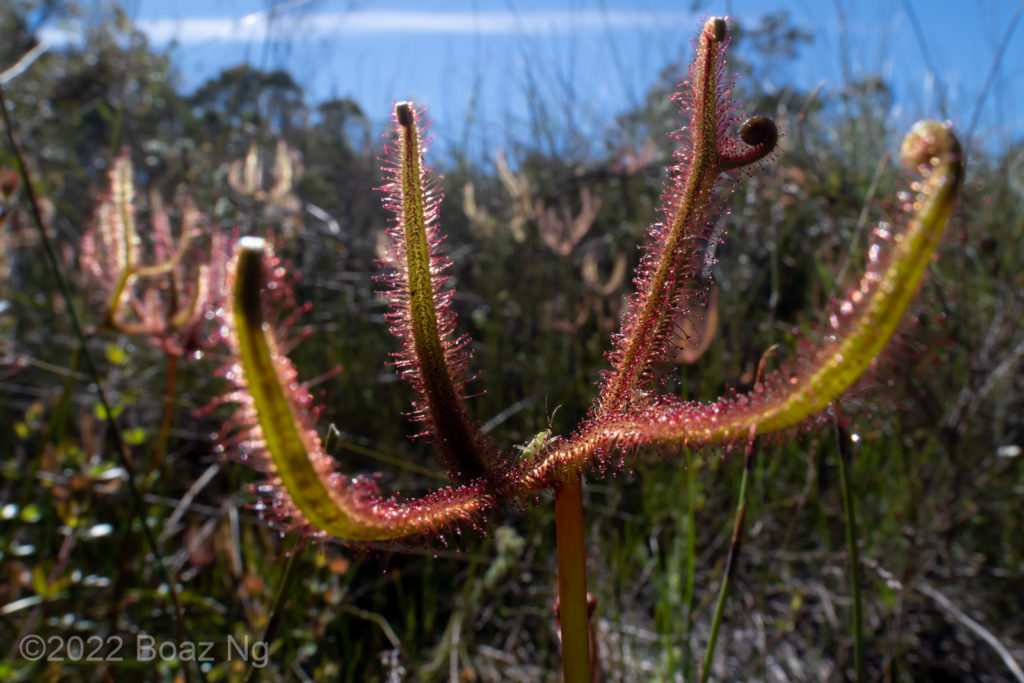
Setocoris sp. bug on Drosera binata.
As the morning transitioned to noon, I found that the sundews were getting harder and harder to photograph. Usually, I rely on a low sun to illuminate the sundews from behind and provide a good contrast of the glowing backlit plant against a dark backdrop. However, with the sun so high up, the spindly leaves of D. binata blend right in with the bright heath and ferns. Normally I’d stop shooting until late afternoon but the plants here were simply too morphologically interesting so I was encouraged to innovate a new composition. I found that photographing the plants from below gave a very interesting ‘bugs eye view’ that made the species look like a forest of towering prehistoric trees!
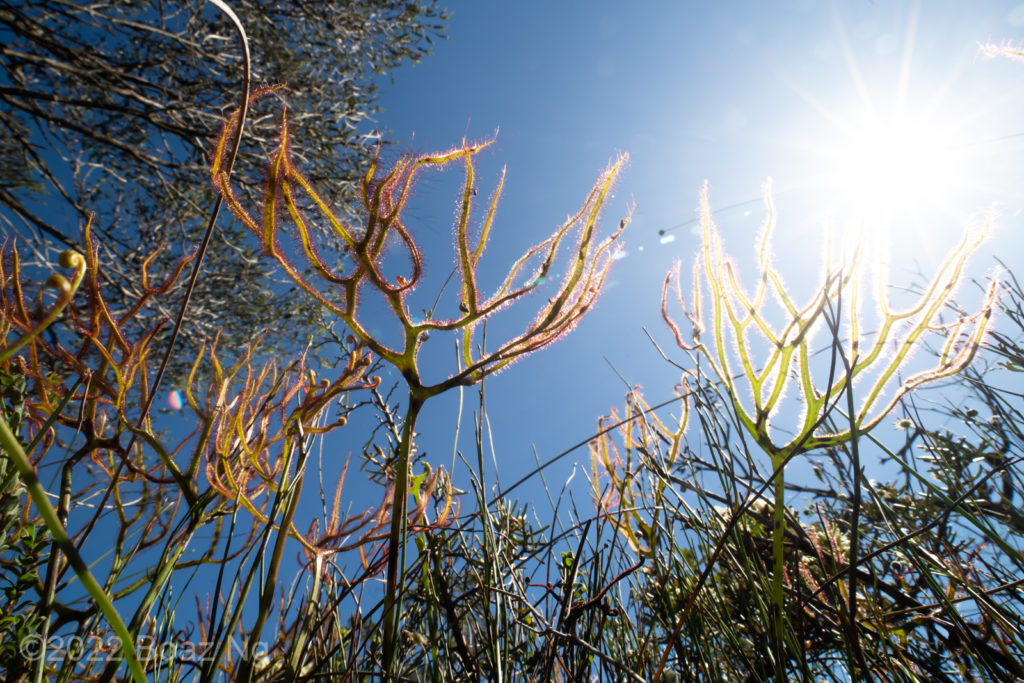
Never before had I seen so many different shapes and sizes of Drosera binata in one location, and I found specimens that represented the full spectrum between the multifida and dichtoma varieties. This was absolutely one of the best sites I had ever visited to study the complexities of the species complex. In fact, I think I saw more plants here than the rest of my life combined! After driving to a nearby waterfall to bathe and have dinner, I promptly fell asleep utterly exhausted after a full day of observing the plants.
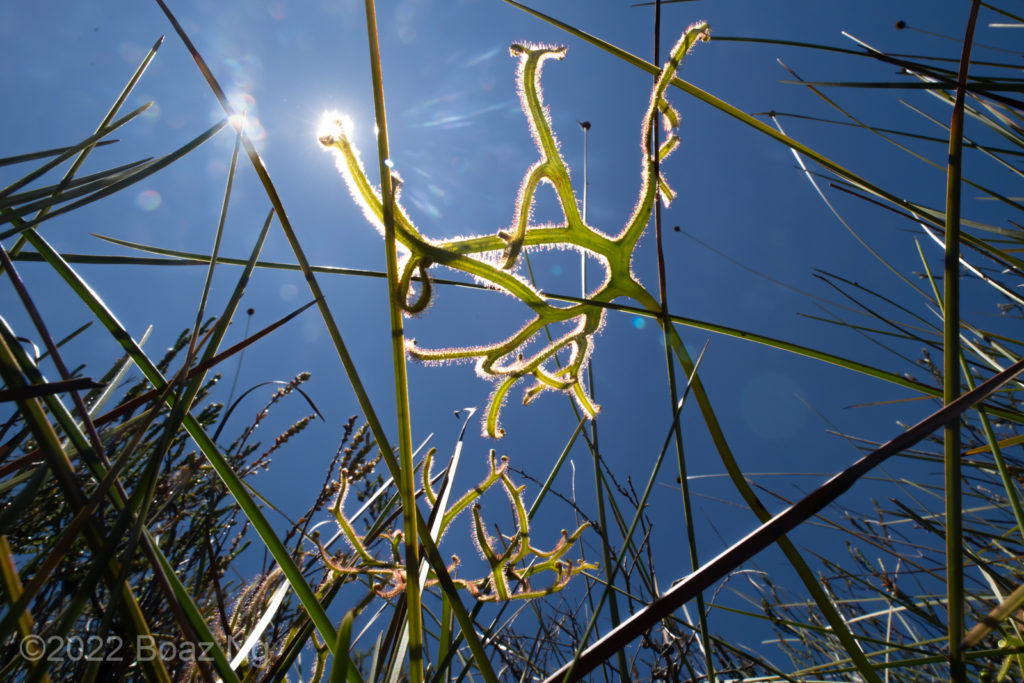
I awoke the following morning to a cover of thick fog blanketing the plateau. The previous day I had driven past a stretch of national park that had been burnt as part of a fire hazard reduction program. While the ecological benefits of such programs are debatable, especially when they occur out of season and after basically most of the east coast had burnt away a year prior, Drosera binata is amongst the first species to reappear after fire. As I hiked into the burnt gully, the fog lifted to reveal thousands of sundews covering the hillside.
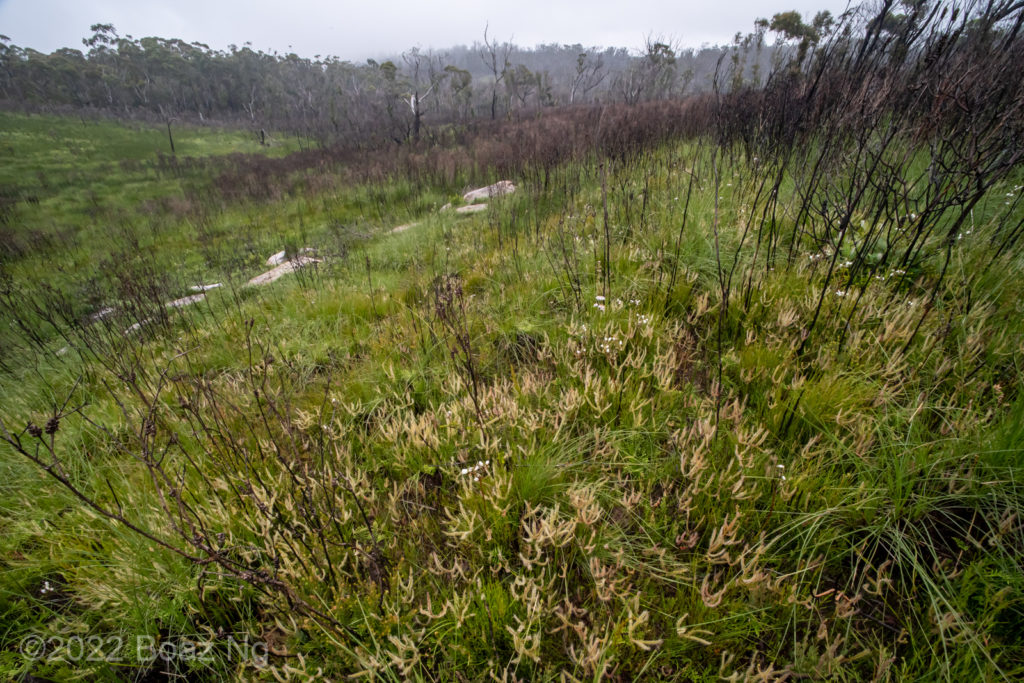
In contrast to yesterday’s location, the entire population here comprised the standard ‘dichtoma’ variety of D. binata, with golden leaves that divided rather sparingly. Many of the plants here grew to a large size, possibly fertilised by the ash that enriches the soils after burning. Every other plant was in bloom as the species is stimulated to do so by fire. I even spotted a few fluorescent pink blooms!
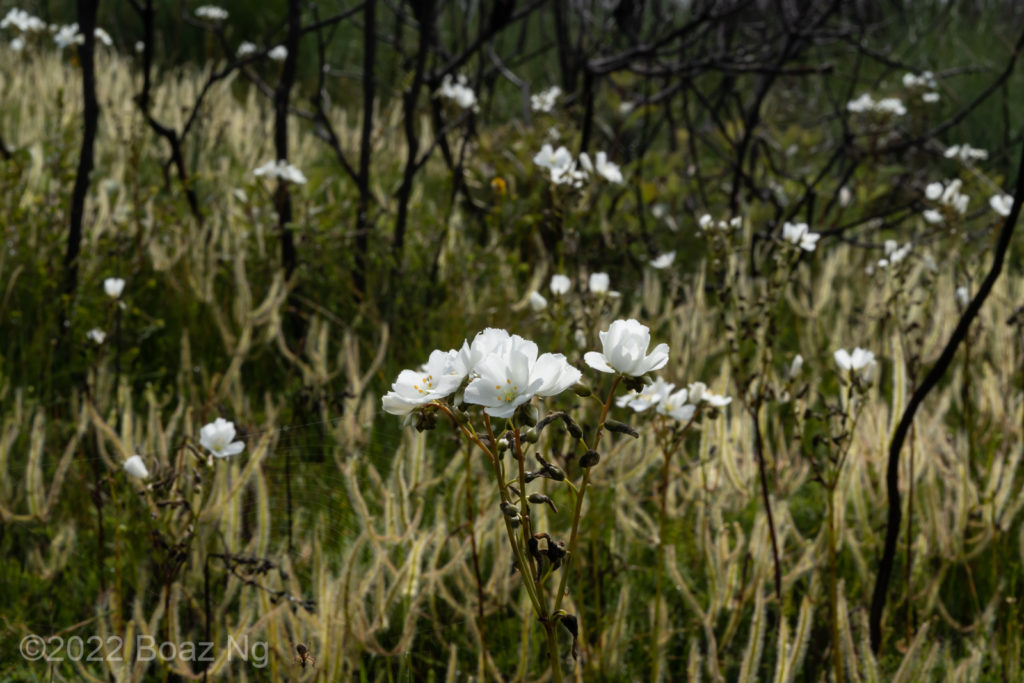
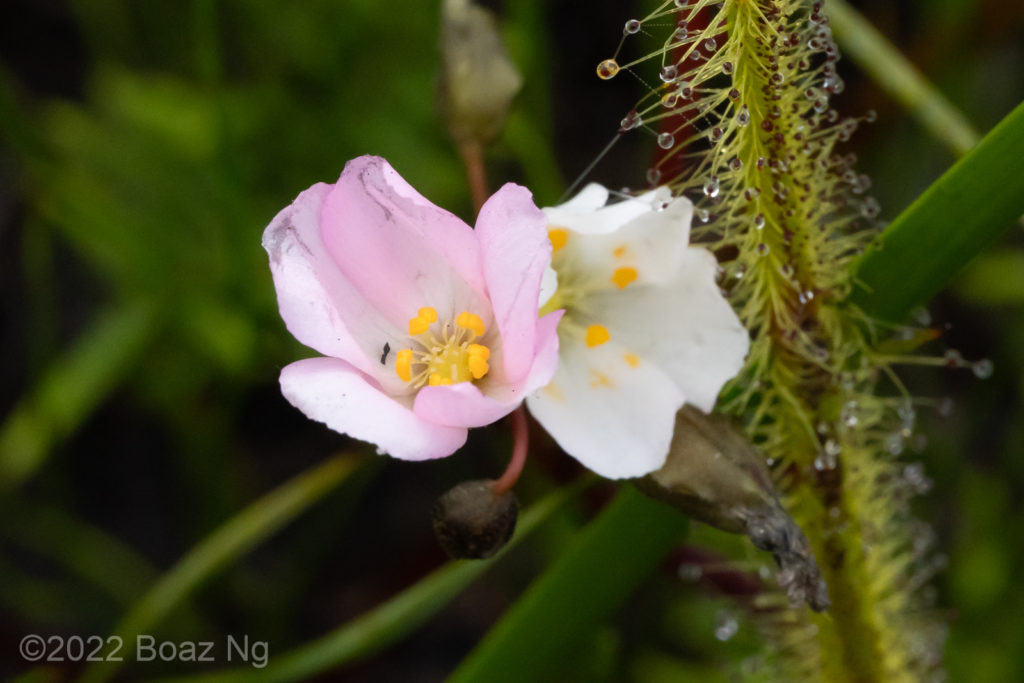
Glancing towards the thick heathland across the boundary of the prescribed burn site, the close relationship D. binata has with fire became immediately apparent. In normal years, the undergrowth grows as a thick layer of bushes and ferns that reach about chest height. The ground is completely choked of sunlight. After fire, this cover of undergrowth is removed and D. binata is reawakened by the sudden influx of light and warmth. The sundews take advantage of cleared space in the two or so years before the bush regenerates to reproduce, set seed and spring forth a new generation of seedlings before entering a long dormancy period.
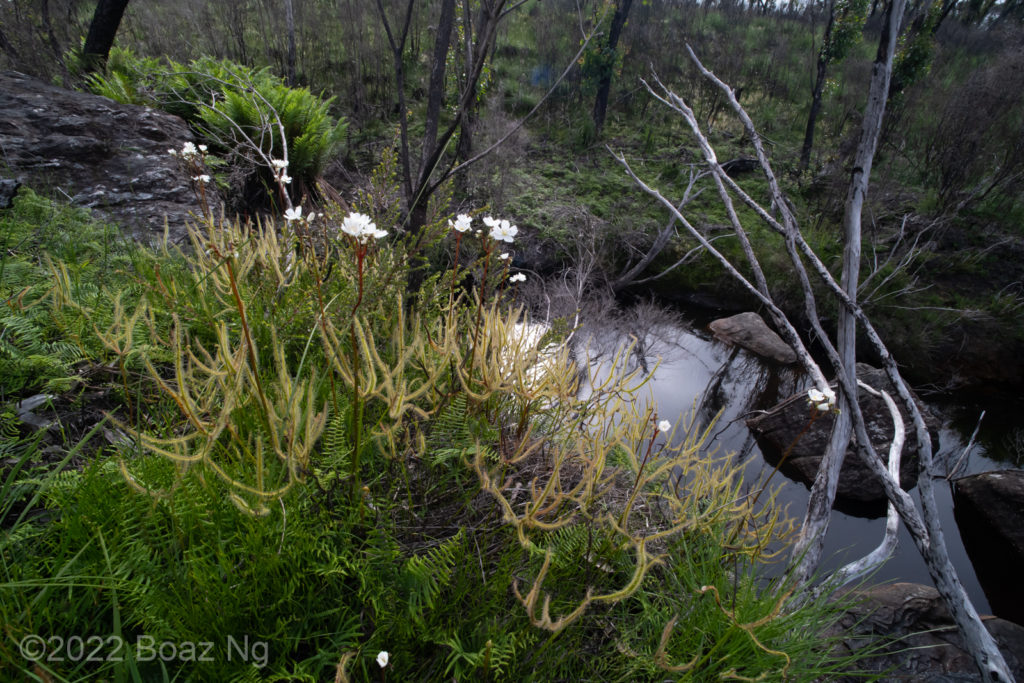
You’d think that after seeing so many specimens over the course of two days I’d become an expert on the species, but really I’m left with more questions than I began with. How come the multifida style plants only grew at the first site and not the second? Which factors control the number of bifurcations and shape of the laminae in the species? Should the ‘multifida’ and ‘dichotoma’ forms even be considered varieties under ‘D. binata’ or are they separate enough to distinguish as separate species? I guess the only way to find out is to keep searching for them in the wild!
